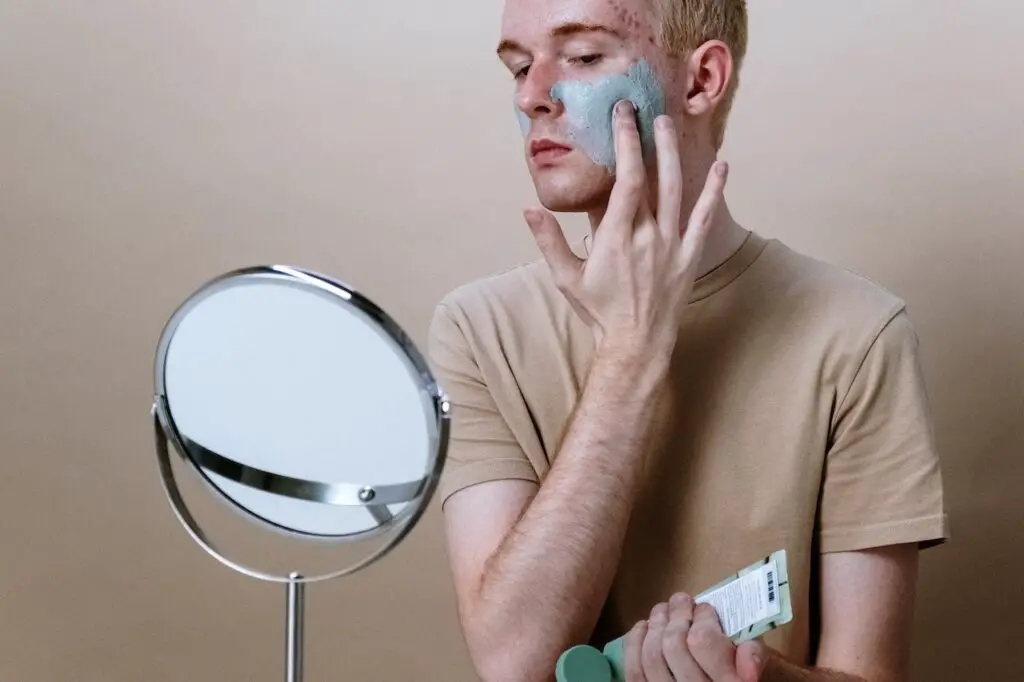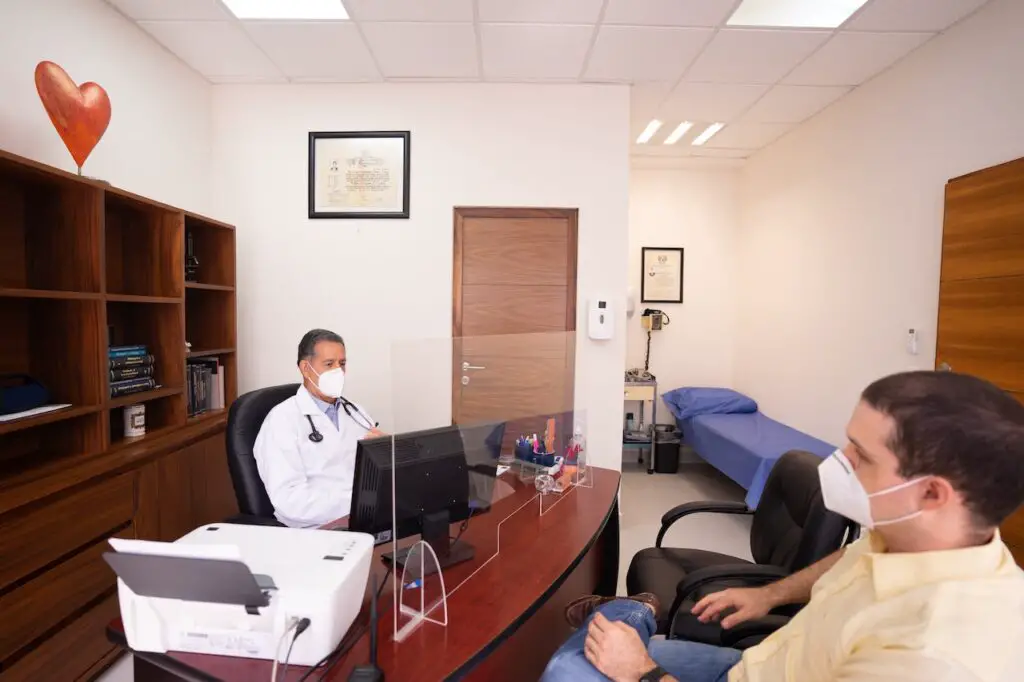Have you ever experienced the discomfort and annoyance of ingrown hairs? These pesky little hairs can appear anywhere on the body and can be more than just a cosmetic issue. In this article, we will explore the hidden dangers of ingrown hairs and provide you with essential information to understand the causes, complications, prevention, and treatment of this common condition.
Understanding Ingrown Hairs
What are Ingrown Hairs?
Ingrown hairs are a common skin condition where the hair follicle, instead of growing out of the skin, curls back or grows sideways into the skin. This often leads to the formation of small, red bumps or pustules that can be itchy, painful, and inflamed. Ingrown hairs can occur in both men and women and can appear on various parts of the body, including the face, neck, armpits, legs, and bikini area.
While ingrown hairs are more prevalent in individuals with curly or coarse hair, anyone can experience them. It is important to address ingrown hairs promptly to prevent complications such as infections and scarring.
Causes of Ingrown Hairs
Several factors contribute to the development of ingrown hairs. One of the primary causes is improper hair removal techniques. Shaving too closely or against the direction of hair growth can cause the hair to be cut below the skin surface, leading to ingrown hairs. Dull razors can also increase the likelihood of ingrown hairs as they are less effective in cleanly cutting the hair.
Additionally, wearing tight clothing or engaging in activities that cause friction against the skin can cause the hair to curl back into the skin. People with naturally curly or coarse hair are more prone to ingrown hairs due to the hair’s tendency to naturally curl or grow in irregular patterns.
Related: How to Get Rid of Ingrown Hairs: Men’s Shaving Tips and Tricks

The Hidden Dangers of Ingrown Hairs
While ingrown hairs may seem like a minor inconvenience, they can lead to various complications and potential dangers if left untreated.
Infections and Abscesses
When ingrown hairs become inflamed or infected, they can give rise to infections and abscesses, posing potential dangers to the affected area. The irritation and inflammation caused by the ingrown hair can create an environment conducive to bacterial growth. Bacteria can enter the skin through small openings and cause infection, leading to the formation of painful abscesses.
Abscesses are localized collections of pus that form as a result of the body’s immune response to the infection. These abscesses can be accompanied by symptoms such as redness, swelling, tenderness, and warmth in the affected area. In severe cases, medical intervention may be necessary to drain the abscess and administer antibiotics to prevent further complications.
Hyperpigmentation and Scarring
One of the hidden dangers of ingrown hairs is the potential for hyperpigmentation and scarring. When ingrown hairs repeatedly occur in the same area or when they are constantly picked or squeezed, it can lead to hyperpigmentation. Hyperpigmentation is the darkening of the skin in the affected area, resulting in patches or spots that are darker than the surrounding skin. This discoloration can persist even after the ingrown hair has been resolved, affecting the appearance of the skin.
Also, frequent picking or squeezing of ingrown hairs can cause trauma to the skin, resulting in scarring. These scars may appear as raised or depressed areas and can be permanent. To prevent hyperpigmentation and scarring, it is important to avoid manipulating or irritating ingrown hairs and to seek appropriate treatment.
Folliculitis and Cellulitis
Ingrown hairs can also contribute to the development of two related conditions: folliculitis and cellulitis. Folliculitis occurs when the hair follicles become infected, leading to the formation of small, red bumps or pustules. These bumps may be itchy, tender, and filled with pus. The infection is usually caused by bacteria, and if left untreated, it can spread and lead to cellulitis.
Cellulitis is a more serious condition characterized by redness, swelling, warmth, and pain in the affected area. It occurs when the infection from the ingrown hair spreads to the surrounding skin and deeper tissues. Cellulitis requires prompt medical attention as it can lead to severe complications if not treated appropriately. Doctors may prescribe oral antibiotics to clear the infection and prevent its further spread.
Related: How to Get a Smooth, Close Shave: Men’s Grooming Tips and Tricks

Prevention Tips for Ingrown Hairs
Taking preventive measures can significantly reduce the occurrence of ingrown hairs. Here are some helpful tips:
Exfoliation Techniques
Exfoliation techniques play a crucial role in preventing and managing ingrown hairs. Regular exfoliation helps remove dead skin cells and unclog hair follicles, reducing the chances of hairs becoming trapped beneath the skin’s surface. There are various exfoliation methods that can be employed.
One effective technique is using a gentle exfoliating scrub or body wash with exfoliating particles. These scrubs work by sloughing off dead skin cells, promoting cell turnover, and preventing the buildup of debris that can block hair follicles. Another option is dry brushing, which involves using a brush with soft bristles to gently sweep over the skin, aiding in the removal of dead skin cells and promoting circulation.
It’s important to exfoliate regularly but not excessively, as over-exfoliation can cause skin irritation. Aim to exfoliate two to three times a week, paying special attention to areas prone to ingrown hairs. Remember to moisturize the skin afterward to maintain its hydration and protect its barrier function.
Proper Shaving and Hair Removal Practices
Proper shaving and hair removal practices are essential for minimizing the risk of ingrown hairs. By following a few simple guidelines, you can significantly reduce the occurrence of this bothersome condition.
Firstly, ensure that you use a sharp razor when shaving. Dull blades can cause hair to be cut unevenly, increasing the likelihood of ingrown hairs. Additionally, shaving in the direction of hair growth can help prevent irritation and ingrown hairs. Avoid the temptation to shave too closely, as this can also contribute to ingrown hairs.
Before shaving, it’s beneficial to prepare the skin and hair follicles. Taking a warm shower or applying a warm towel to the area will soften the hair and open up the follicles. Use a shaving cream or gel to create a smooth surface and provide lubrication, minimizing friction and irritation.
After shaving, apply a soothing aftershave or moisturizer to calm the skin and help prevent irritation. Moisturizing regularly can also keep the skin hydrated and supple, reducing the chances of ingrown hairs.
It’s important to note that hair removal methods other than shaving, such as waxing or epilation, can also lead to ingrown hairs. To minimize this risk, make sure to exfoliate regularly, as it helps remove dead skin cells and prevent hair follicle blockage.
Moisturizing the Skin
Moisturizing the skin is a vital step in preventing and managing ingrown hairs. Keeping the skin well-hydrated helps soften the hair, making it less likely to curl back into the skin. Here are some important considerations for effective moisturizing:
Choose a moisturizer that suits your skin type. Opt for a lightweight, non-comedogenic formula that won’t clog the pores. Look for ingredients like hyaluronic acid, glycerin, or ceramides, which help attract and retain moisture in the skin.
Apply moisturizer daily, preferably after bathing or showering when the skin is still slightly damp. This helps seal in moisture and enhances absorption. Pay extra attention to areas prone to ingrown hairs, such as the bikini area, legs, or beard area.
Related: The Best Men’s Grooming Products for Acne-Prone Skin

Treatment Options for Ingrown Hairs
If you already have ingrown hairs, several treatment options can help alleviate the discomfort and resolve the condition.
Home Remedies
Home remedies can be effective in treating mild cases of ingrown hairs and relieving associated discomfort. Here are some popular home remedies to consider:
Apply a warm compress
Placing a warm, damp cloth or towel on the affected area helps soothe inflammation and encourages the hair to release from the skin. Leave the compress on for a few minutes and repeat several times a day.
Use a sterile needle or tweezers
If you can see the ingrown hair close to the surface, you can carefully lift it out using a sterile needle or tweezers. Ensure that the tools are properly sanitized to avoid introducing bacteria.
Avoid picking or squeezing
Although it can be tempting, avoid picking or squeezing the ingrown hair as it can worsen inflammation, lead to infection, or cause scarring.
Tea tree oil
Known for its antibacterial and anti-inflammatory properties, tea tree oil can help reduce redness and prevent infection. Dilute a few drops of tea tree oil with a carrier oil and apply it to the affected area using a cotton swab.
Aloe vera gel
The soothing properties of aloe vera gel can alleviate irritation and reduce inflammation. Apply a thin layer of pure aloe vera gel to the affected area and leave it on for several minutes before rinsing.
Over-the-Counter Products
Over-the-counter (OTC) products can be helpful in treating and preventing ingrown hairs. These products typically contain ingredients that exfoliate the skin, reduce inflammation, and promote hair growth. Here are some common types of OTC products for ingrown hairs:
Exfoliating creams or lotions
These products often contain ingredients like salicylic acid or glycolic acid, which help remove dead skin cells and unclog hair follicles. Regular use can reduce the occurrence of ingrown hairs.
Topical creams or serums
Certain OTC creams or serums are formulated specifically to target ingrown hairs. They may contain ingredients like hydrocortisone to reduce inflammation or retinoids to promote skin cell turnover.
Ingrown hair treatment pads
These pre-soaked pads are convenient for targeted application. They often contain a combination of exfoliating and soothing ingredients to help alleviate ingrown hairs.
Professional Treatments
Professional treatments offer advanced solutions for managing ingrown hairs and addressing associated concerns. Consulting with a dermatologist or skincare professional can provide access to effective procedures and techniques. Here are some professional treatments commonly recommended:
One popular option is laser hair removal, which targets the hair follicles with laser energy. This treatment reduces hair growth and minimizes the chances of ingrown hairs. Multiple sessions may be required for optimal results.
Chemical peels performed by dermatologists involve applying a chemical solution to the skin, which exfoliates the outer layer. This process promotes cell turnover, unclogs hair follicles, and reduces the occurrence of ingrown hairs.
Microdermabrasion is another professional treatment that uses a specialized device to gently exfoliate the skin’s surface. It removes dead skin cells, revealing smoother skin and preventing hair follicle blockage.
Related: How to Get Rid of Bacne: 14 Dermatologist Approved Treatments
Conclusion
Ingrown hairs are not only a cosmetic concern but can also pose hidden dangers if left untreated. By understanding the causes, complications, prevention, and treatment options associated with ingrown hairs, you can take proactive measures to minimize their occurrence and maintain healthy skin. Remember to prioritize proper hair removal techniques, maintain a regular skincare routine, and seek professional help when necessary to keep your skin free from the dangers of ingrown hairs.
FAQs
Are ingrown hairs only a problem for people with curly hair?
No, while curly or coarse hair is more prone to ingrown hairs, anyone can experience this issue.
Can ingrown hairs resolve on their own?
In some cases, ingrown hairs may resolve without intervention, but it is advisable to treat them to prevent complications.
Can I prevent ingrown hairs when waxing or using other hair removal methods?
Yes, following proper techniques and exfoliating regularly can help reduce the chances of ingrown hairs.
Is it safe to remove ingrown hairs myself?
It is generally safer to let a professional handle the removal of ingrown hairs to avoid further irritation or infection.
How long does it take for hyperpigmentation to fade after resolving ingrown hairs?
The time it takes for hyperpigmentation to fade can vary, but it may take several weeks or months for the skin to return to its normal color.


